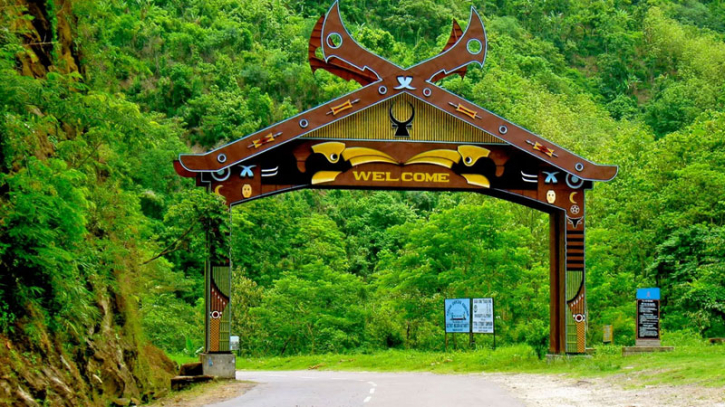Bright trade prospects between Bangladesh and Nagaland

The northeast of India is fast gaining attention for its rich economic resources and strategic location. It is positioned to serve India's strategic vision encompassed in the Act East Policy. Economically, the region has large deposits of oil, natural gas, coal, and limestone, and a sizable proportion of land under cultivation for agro-horticulture products, bamboo, and rubber. Besides a wide range of natural, archaeological, and cultural tourist sites, this region also provides opportunities for medical tourism. It shares international borders with Bangladesh, Bhutan, Nepal, and Myanmar.
The region acts as a land bridge for India's participation in institutional forums, including the Bay of Bengal Initiative for Multi-sectoral Technical and Economic Cooperation and the South Asia Sub-regional Economic Cooperation (SASEC) program. Furthermore, access to Myanmar offers great potential to integrate India with other Association of Southeast Asian Nations (ASEAN) countries. Nagaland, a north-eastern state in India, is looking to forge a mutually beneficial investment relationship with Bangladesh, taking advantage of the country's port facilities to explore new trade avenues.
A delegation led by Business Association of Nagas (BAN) president Mongkum Jamir had visited Bangladesh to discuss the potential of bilateral trade at the invitation of Abdul Matlub Ahmad, president of India-Bangladesh Chamber of Commerce and Industry (IBCCI) recently. The Nagaland businesses plan to export bamboo chips and coffee to Bangladesh, while Bangladesh would send garment products to Northeast India. Nagaland produces world-class coffee that could be processed and exported globally through Bangladesh. The Nagaland businessmen are also interested in exporting fruits for juice and packaged food production. The India-Bangladesh Chamber of Commerce and Industry (IBCCI) and the Business Association of Nagas (BAN) signed a Memorandum of Understanding (MoU) to enhance trade relations at Niathu Resort in Dimapur on April 6, 2023.
The MoU signed on the sidelines of the B20 Business Summit at Kohima will aim to facilitate the exchange of information, expertise and technology in the area of agriculture, food processing, bamboo, tourism, textiles, IT services, mineral and renewable energy. The agreement will also promote bilateral trade and investment between Bangladesh and Nagaland, with both organisations providing the necessary assistance and support to their respective business communities, working together on joint projects and initiatives, reducing trade barriers and improving market access for each other's goods and services. Bangladeshi government's support for mutual import-export of agri-based and other resources and suggested a direct Sylhet-Dimapur flight.
Northeast India shares an 800-kilometer border with Bangladesh, offering ample investment opportunities for Nagaland businesses. Siliguri Corridor is one of the most geographical compulsions for India. This narrow corridor separated the whole North Eastern region from the Indian Mainland. Bangladesh creates a broader nexus between the Indian mainland and the North Eastern region. Because Agartala is 1,650km from Kolkata and 2,637km from New Delhi through Shillong and Guwahati. The journey between Agartala and Kolkata via Bangladesh, on the other hand, is only about 550km. Furthermore, the average distance between Bangladesh's major cities and northeast India is 20km to 300km. As a result, Bangladesh is always considered crucial for the North-Eastern region's connectivity with mainland India by rail, road, and river routes. So, the bilateral ties and engagements between India and Bangladesh help in exploring many new windows of possibilities for Nagaland, ranging from trade and commerce to culture and tourism.
The route through Assam is the shortest possible route for Bangladesh-Nagaland trade initiatives. That's why the connectivity needs to be uninterrupted. India is planning to build a new road link via a four-lane bridge across the Kushiyara river to connect Bangladesh and Assam. India has planned road connectivity with Bangladesh by constructing a 300-metre four-lane bridge over the Kushiyara River and an around 600-metre road in the Karimganj sector of the Indo-Bangla border connecting Karimganj in Assam and Jakiganj Upozila in the Sylhet district in Bangladesh. Nearly half of the 900-metre road project will be in Assam (Karinganj) and the other half in Bangladesh. Once the road will be completed, the trade ties between Nagaland and Bangladesh will get a boost.
Not only that, to boost bilateral trade, India-Bangladesh have launched 36 land ports include five comprehensive depots. The latest one is in Dawki of Meghalaya. The connectivity has been improved with the North East region. The region can contribute more to the strengthening of two neighbouring economies. The businessmen from Nagaland can also invest in developing economic zones in Bangladesh.
Moreover, Bangladesh and Nagaland have signed 34 agreements for mutual benefits, paving the way for a stronger economic partnership between the two regions. The collaborative efforts of these business communities will not only boost their respective economies but also foster a stronger bond between the neighbouring countries.
Source: The Daily Observer
.png)




